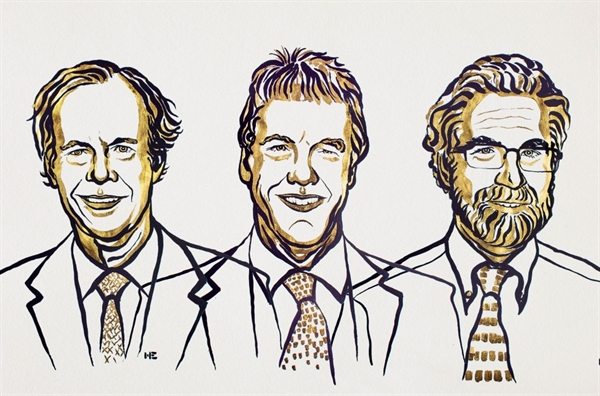Nobel Prize in Medicine Awarded for Research on How Cells Manage Oxygen

The Nobel Assembly at Karolinska Institutet has decided to award the 2019 Nobel Prize in Physiology or Medicine jointly to William G. Kaelin Jr., Sir Peter J. Ratcliffe and Gregg L. Semenza for their discoveries of how cells sense and adapt to oxygen availability.
Animals need oxygen for the conversion of food into useful energy. The fundamental importance of oxygen has been understood for centuries, but how cells adapt to changes in levels of oxygen has long been unknown.
William G. Kaelin Jr., Sir Peter J. Ratcliffe and Gregg L. Semenza discovered how cells can sense and adapt to changing oxygen availability. They identified molecular machinery that regulates the activity of genes in response to varying levels of oxygen.
The seminal discoveries by this year’s Nobel Laureates revealed the mechanism for one of life’s most essential adaptive processes. They established the basis for our understanding of how oxygen levels affect cellular metabolism and physiological function. Their discoveries have also paved the way for promising new strategies to fight anemia, cancer and many other diseases.
Nobel Prizes and Laureates awarded for “the greatest benefit to mankind”
Between 1901 and 2018, the Nobel Prizes and the Prize in Economic Sciences were awarded 590 times to 935 people and organizations. The Nobel Prize is an international award administered by the Nobel Foundation in Stockholm, Sweden, and based on the fortune of Alfred Nobel, Swedish inventor and entrepreneur. In 1968, Sveriges Riksbank established The Sveriges Riksbank Prize in Economic Sciences in Memory of Alfred Nobel, founder of the Nobel Prize. Each prize consists of a medal, a personal diploma, and a cash award.
A person or organization awarded the Nobel Prize is called Nobel Laureate. The word “laureate” refers to being signified by the laurel wreath. In ancient Greece, laurel wreaths were awarded to victors as a sign of honor.
Facts on the Nobel Prize in Physiology or Medicine
109 Nobel Prizes in Physiology or Medicine have been awarded since 1901. It was not awarded on nine occasions: in 1915, 1916, 1917, 1918, 1921, 1925, 1940, 1941 and 1942. 39 Medicine Prizes have been given to one Laureate only. 33 Medicine Prizes have been shared by two Laureates and 37 Medicine Prizes have been shared between three Laureates.
To date, the youngest Nobel Laureate in Physiology or Medicine is Frederick G. Banting, who was 32 years old when he was awarded the Medicine Prize in 1923.
Of the 216 individuals awarded the Nobel Prize in Physiology or Medicine, 12 are women. Of these 12, Barabara McClintock is the only one who has received an unshared Nobel Prize.
The Nobel medal for Physiology and Medicine was designed by Swedish sculptor and engraver Erik Lindberg and represents the Genius of Medicine holding an open book in her lap, collecting the water pouring out from a rock in order to quench a sick girl’s thirst.
News source: www.nobleprize.org